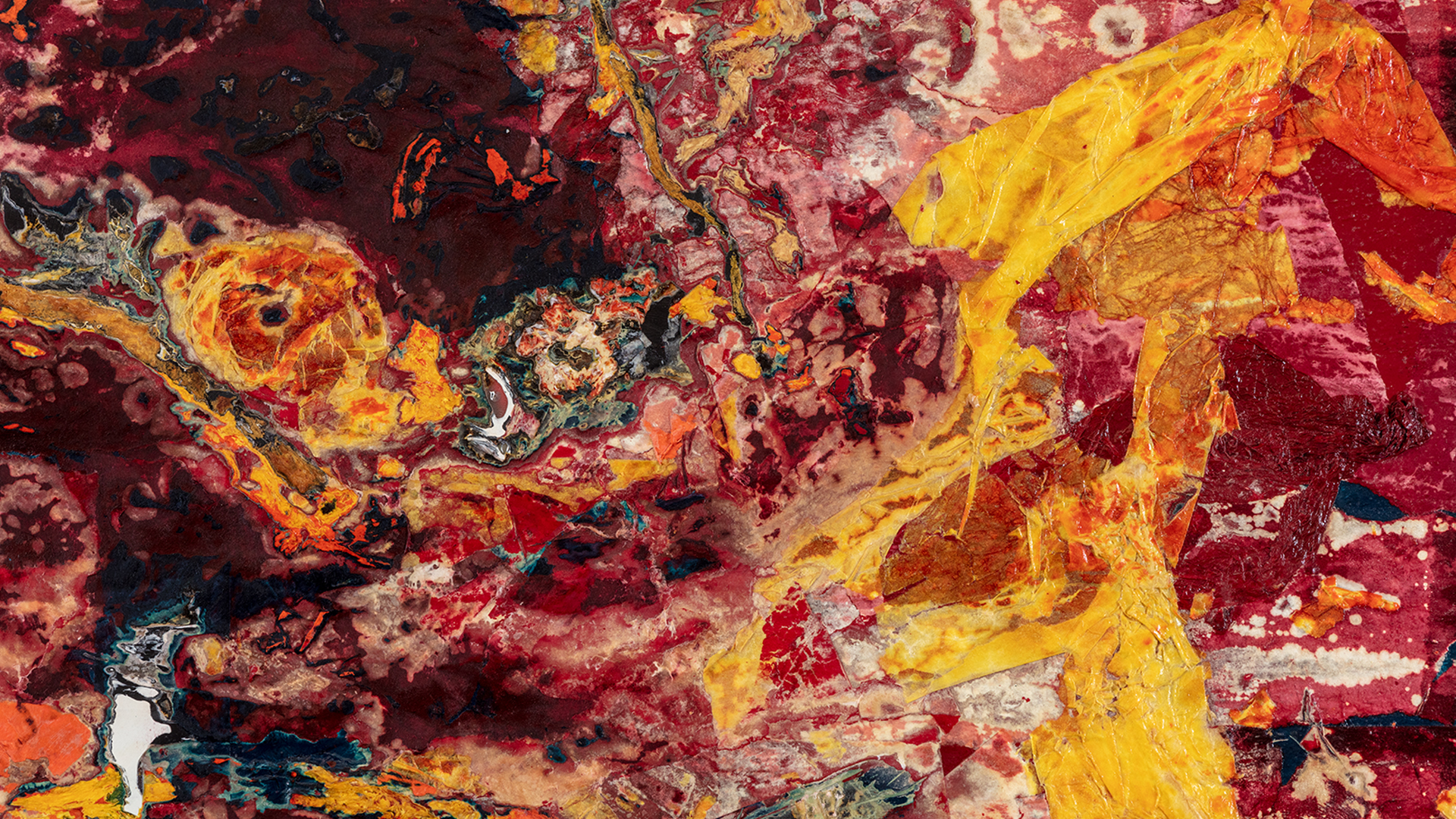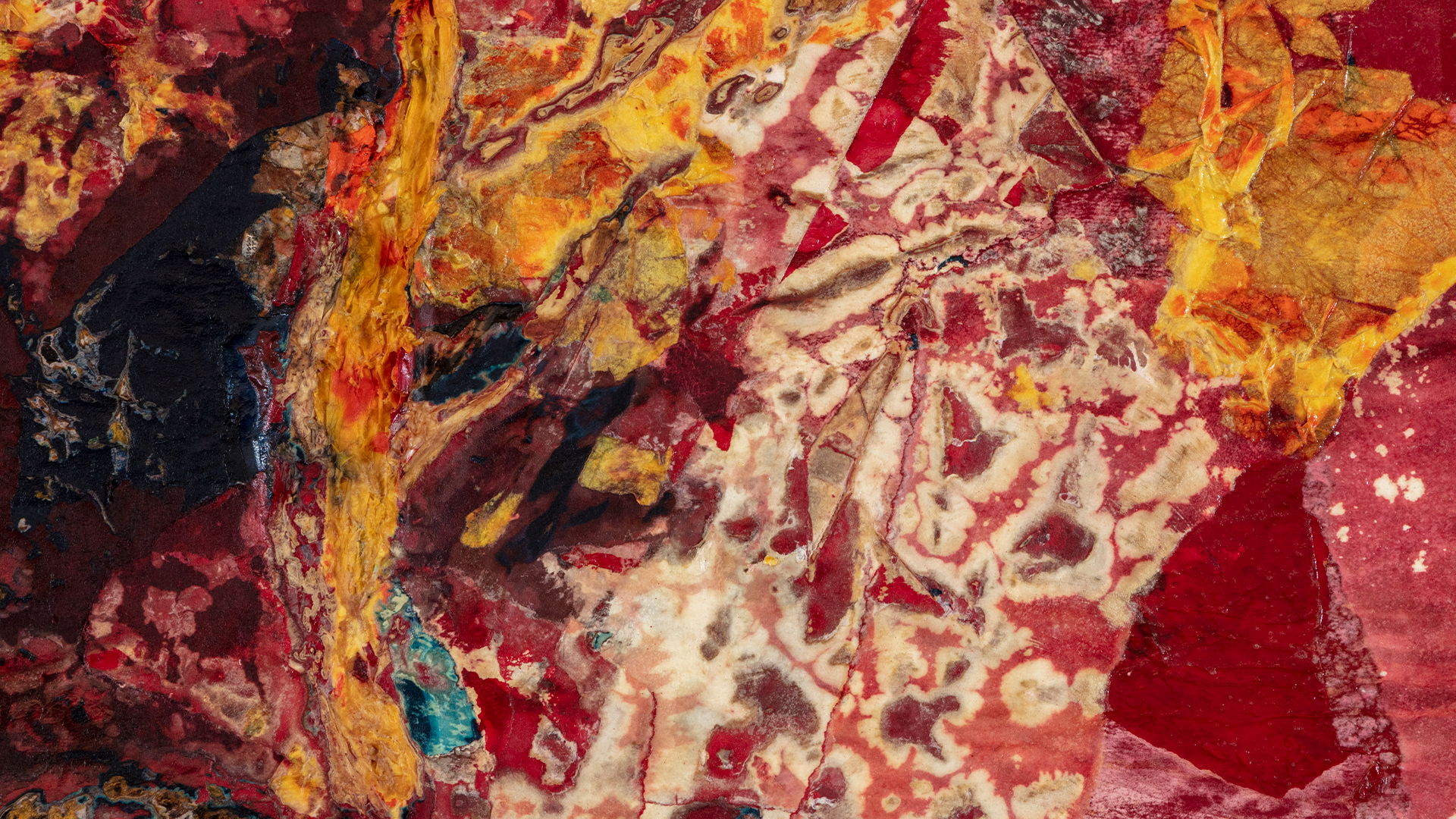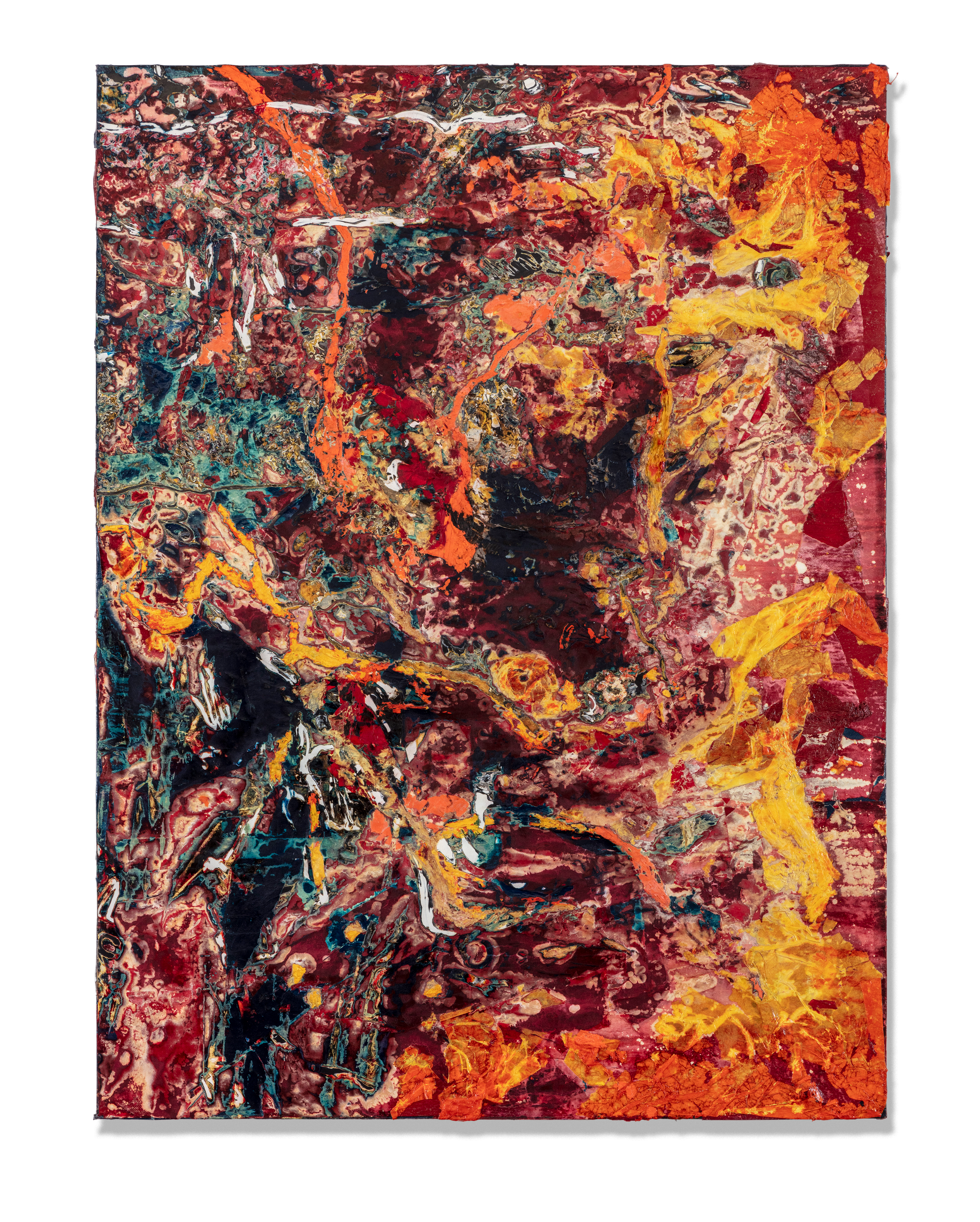Mark Bradford
A Straight Line
A Straight Line
Price available upon request
2023
Mixed media on canvas
243.8 x 183.5 x 5.4 cm / 96 x 72 ¼ x 2 ⅛ in
‘Art materials are always personal. We make them personal. But they are often also connected to something else. In my case, it’s community.’—Mark Bradford [1]

With its vivified surface of molten reds, oranges, and yellows, weighted passages of cool blue and maroon, and errant streaks of white traversing its surface, Mark Bradford’s ‘A Straight Line’ (2023) reframes abstraction to mesmerizing effect. Reveling in color and materiality, formal and allegorical complexity, this electrifying field proposes a continuation of Bradford’s career-long declaration that artistic explorations of color and form—the fundamental building blocks of what structures the world into knowable shapes—is inextricable from deconstructing sociopolitical institutions that turn knowledge into systems of control and coercion.
Bradford has often cited abstract expressionism as an initial influence in his artistic development. Upheld as the exemplar to generations of contemporary American painters with modernist sensibilities, the artist's first experience with this postwar movement was, ironically, during an early trip to Europe. While he was inspired by the nuanced works of Mark Rothko and Clyfford Still, Bradford noted the dearth of Black artists in the history of abstract painting and the disparity between perspectives reflected inside and outside institutional settings. As he remarked: ‘In the museums, it was all white. But outside in the streets, you saw more integration and more political openness. People talked about issues and voiced their opinions.’ [2]


These observations ultimately led the artist to consider how the Black experience, political and social issues, might be expressed beyond figurative representation, resulting in Bradford developing his own formal language. [3] Diverging from the visual and material conventions of painting, Bradford uses construction paper, comic books and power tools over oil, acrylic and paintbrushes to challenge ways of thinking about the construction of forms and the politics of inherited painterly traditions. Usually working on a large scale, he accumulates numerous layers of paper, string, caulk and other quotidian materials on his canvases, which he then sands, carves, shreds and oxidizes to create remarkable textural patterns that are a hallmark of his work.
Bradford’s multifaceted practice coalesces in ‘A Straight Line,’ revealing an organically evolved yet complex and interconnected surface that belies the simplicity of its title and, by extension, its socio-political and art historical undercurrents. The description of a straight line summons a point of departure for artistic expression, modernity, efficacy and the foundations that structure our visual world, while evoking divisions and gatekeeping in relationship to power. In this way, one might interpret ‘A Straight Line’ as a call and response, grappling with imposed structures and the nuances of reality. ‘Having one foot in the studio and another in American culture,’ says Bradford. ‘I’ve found alternative ways of approaching abstraction.’ [4]

About the artist
 Mark Bradford was born in 1961 in Los Angeles, where he still lives and works. He is best known for his large-scale abstract paintings created out of paper. Characterized by its layered formal, material and conceptual complexity, Bradford’s work explores social and political structures that objectify marginalized communities and the bodies of vulnerable populations. Just as essential to Bradford’s work is a social engagement practice through which he reframes objectifying societal structures by bringing contemporary art and ideas into communities with limited access to museums and cultural institutions.
Mark Bradford was born in 1961 in Los Angeles, where he still lives and works. He is best known for his large-scale abstract paintings created out of paper. Characterized by its layered formal, material and conceptual complexity, Bradford’s work explores social and political structures that objectify marginalized communities and the bodies of vulnerable populations. Just as essential to Bradford’s work is a social engagement practice through which he reframes objectifying societal structures by bringing contemporary art and ideas into communities with limited access to museums and cultural institutions.




